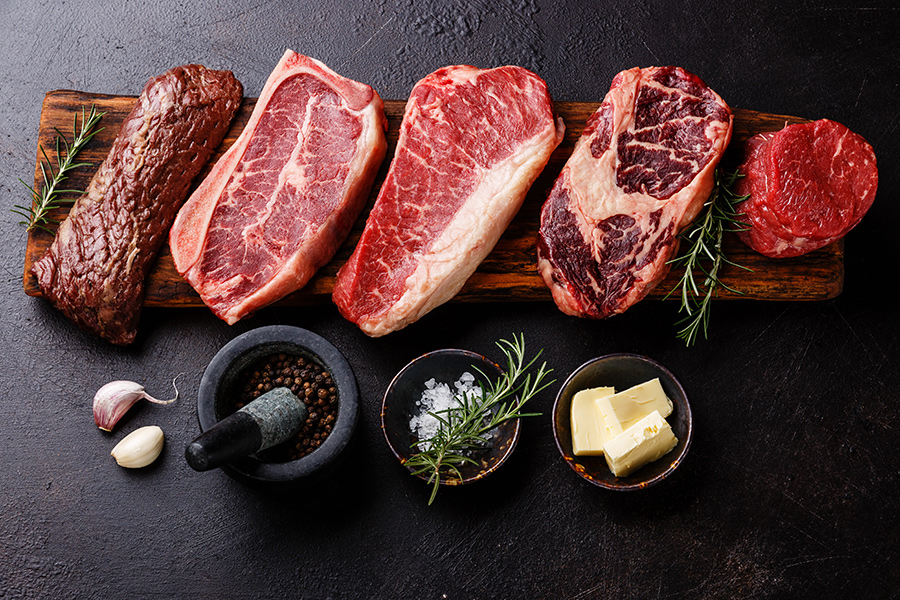Where's the Beef?
Friday, January 14, 2022
Some call it “shortages”, others blame it on supply chain and transportation issues. Either way, not being able to readily purchase groceries and other household items can be frustrating and alarming. Throughout the pandemic, producers noticed several peaks of “panic buying” that left some shelves empty for a large percentage of the population.
It didn’t take long for people to look at more reliable sources for necessary items. Beef demand was no different. Within a matter of weeks, small abattoirs were scheduling months ahead and even beyond a year out. Many of these new customers were individuals and families that had never purchased livestock or custom processed sides/quarters for the freezer. The following information is intended for first-time customers or the livestock producer selling an animal intended for slaughter. An understanding of the expectations and yields is an essential factor to create happy and repeat customers for years to come.
All cattle are not created equally
The first difference that one may notice is simply size or weight. This may be due to age, ration (pasture, grain-fed, combination, etc.), breed or genetics. The percentage (of live weight) of boneless, lean cuts will not be the same with a 600lb calf compared to a 1,200lb steer. Animals may be lighter muscled or heavier muscled in relation to the frame (skeleton).
Quantity vs Quality
Producers strive to provide the best quality product possible, which begins with aging. Our goal is to hang (dry age) all beef carcasses for a minimum of 14 days before processing. This allows for a significant increase of tenderness along with an overall better eating experience. Custom processing sheets allow us to produce the specific cuts the customer requests. Producers will trim fat, debone and remove connective tissue (gristle) as needed. These factors may reduce the total pounds of finished product but result in a higher quality product.
Aging
As mentioned above, aging is an important step in providing the best product they can. This comes with a cost in terms of moisture loss (shrink). A carcass can lose on average 5% to 7% of the total weight from aging. It may not sound like much but relates to 30lbs to 40lbs on a 600lb carcass. Aging beyond 14 days may result in a “beefy” flavor that is desired by some customers. Extended aging results in increased moisture loss and trimming of finished cuts.
Fat
Fat enhances flavor, palatability and the perception of tenderness. Commodity beef that is often available at your local grocery store is likely sourced from a variety of breeds that are fed and finished to a weight of 1,100lbs to 1,400lbs on average. An animal’s ability to put on fat is dependent on time, quality ration and genetics. Excessive fat will be trimmed off finished cuts. Although trimming is not beneficial to yields, a fatter carcass will less moisture (pounds) loss during aging.
Pricing
Some customers see the value in reliable, locally sourced meats. The relationship with a producer, the ability to request farm visits and a freezer of available cuts are a few of the factors that may drive the decision to purchase. Others may look for the savings in “buying bulk.” Current retail beef prices, livestock prices and processing expenses can complicate your calculations when deciding if custom processing is the better deal. Sometimes it’s less expensive, other times it’s not.
Average yield examples:
1,200lb grain-fed steer should result in roughly a 756lb carcass. (≈60% to 63% dressing percentage)
Aged 14 days (6% shrink) leaves a 710lb carcass ready to cut.
Depending on how fat the carcass is and the percentage of bone-in and boneless cuts, you can expect to yield 50% to 65% of the 710lb aged carcass or 355lbs to 460lbs of finished product.
600lb calf should result in a roughly 330lb carcass (≈55% dressing percentage).
Aged 14 days (7% shrink) results in a 307lb carcass ready to cut.
Since younger cattle are likely to be leaner, you can expect a higher moisture loss and increased trimming. Depending on the percentage of bone-in and boneless cuts, you can expect to yield 45% to 60% of the aged carcass or 140lbs to 185lbs of finished product. This is often a result of less muscle (meat) in relation to the skeleton.
Common Cuts:
Depending on cutting instructions and desired thickness, a customer can expect the following grilling steaks on a whole carcass:
20-26 ribeye steaks
22-28 T-bone/porterhouse steaks
6-8 filets
10-14 sirloin steaks
The remainder of the carcass is often divided into roasts, steaks, stew meat and ground beef.
The goal is to provide customers with a safe and wholesome product while producing the highest quality cuts from your livestock. For any FAPC meat processing questions, please call Joel Jackson at 405-744-3256.

